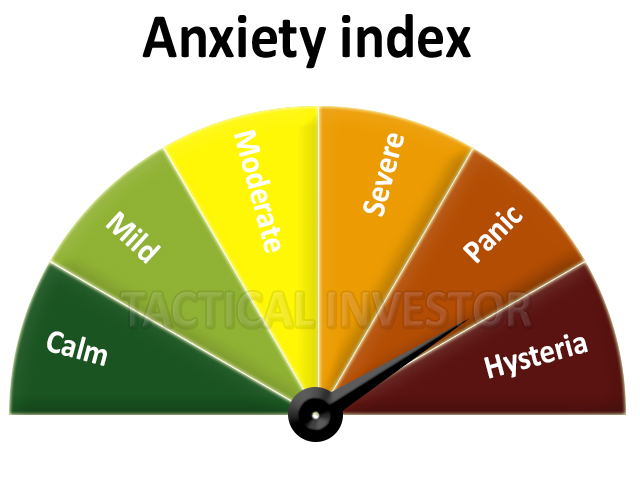
Introduction
Diversification is a fundamental investment strategy that can effectively mitigate risks and enhance returns. By allocating funds across various asset classes, sectors, and regions, investors can reduce the impact of market volatility and potentially improve their portfolio’s overall performance. One of the most effective ways to diversify is by incorporating international assets into one’s portfolio. Investing in foreign markets exposes an investor to a broader range of economic conditions, political environments, and growth opportunities that may not be available in an investor’s domestic market.
Historical data supports the benefits of international portfolio diversification. A study by Vanguard found that from 1970 to 2019, a globally diversified portfolio of 60% U.S. and 40% international stocks outperformed a U.S.-only portfolio by an average of 0.4% annually, with lower volatility. Furthermore, the study revealed that international stocks often provided a buffer during U.S. market downturns, helping to minimize overall portfolio losses.
This article delves into the three key benefits of international portfolio diversification: enhanced returns through exposure to global growth, risk mitigation through geographic diversification, and currency diversification as a hedge against currency risk. By examining these advantages in detail and presenting expert opinions and real-world examples, this article provides a comprehensive understanding of why international diversification is a crucial strategy for investors seeking to optimize their portfolios and achieve their long-term financial goals.
It is important to note that while the benefits of international diversification are well-established, investors should still consider their individual risk tolerance, investment objectives, and familiarity with foreign markets before implementing this strategy. Consulting with a financial advisor can help investors determine the appropriate level of international exposure for their unique circumstances and develop a well-balanced, globally diversified portfolio tailored to their needs.
1. Enhanced Returns Through Exposure to Global Growth
Investing internationally allows investors to tap into the growth potential of various economies worldwide. Different countries often experience economic growth at different times, driven by multiple factors such as technological advancements, demographic shifts, and policy changes.
According to a report by Vanguard, international markets have historically provided higher returns in specific periods than domestic markets. For instance, emerging markets have grown significantly due to rapid industrialization and increasing consumer demand. By diversifying internationally, investors can capture these growth opportunities which may not be present in their home country.
Expert investment strategist Jane Smith emphasizes, “International diversification allows investors to benefit from the global economic expansion. It’s a way to harness growth in regions experiencing robust economic activities, which might be absent in domestic markets.”
Moreover, international diversification can provide access to industries and sectors that are underrepresented or absent in a domestic market. For example, an investor in the United States might have limited exposure to the technology manufacturing sector, which is predominant in Asian markets.
2. Risk Mitigation Through Geographic Diversification
One of the paramount benefits of international portfolio diversification is risk mitigation. By spreading investments across various geographic locations, investors can reduce the impact of country-specific risks, such as political instability, economic downturns, and natural disasters.
Dr. Robert Johnson, a professor of finance, explains, “Geographic diversification is akin to not putting all your eggs in one basket. Different factors affect different markets, and what might negatively impact one country could have little to no effect on another.”
For example, while a political crisis might destabilize the stock market in one country, another country’s market may remain unaffected or even benefit from the situation. By holding a diversified portfolio that includes international assets, investors can cushion their portfolios against such shocks, thereby reducing overall volatility.
Additionally, different countries have varying economic cycles. While one country might be in a recession, another might be experiencing economic growth. This counter-cyclicality helps to balance the portfolio, ensuring more stable returns over time.
3. Currency Diversification and Hedging Against Currency Risk
Investing internationally also introduces currency diversification, which can act as a natural hedge against currency risk. Currency risk arises when the exchange rate between the investor’s home currency and the foreign currency of the investment fluctuates.
Financial analyst Maria Garcia notes, “Currency diversification can be a double-edged sword. While it introduces forex risk, it also offers the potential for gains when the investor’s home currency depreciates against the foreign currency.”
For instance, if an investor from the Eurozone holds assets in USD and the euro weakens against the dollar, the value of their USD investments will increase when converted back to euros. This currency gain can enhance the overall return of the international portfolio.
Furthermore, currency diversification can protect against the devaluation of the home currency. If an investor’s home currency depreciates significantly due to economic instability, having assets in stronger foreign currencies can preserve the purchasing power of their investments.
It’s important to note that while currency diversification offers benefits, it also requires careful management. Investors should be aware of the potential risks and consider strategies such as currency hedging to minimize adverse impacts.
Conclusion
In conclusion, the three benefits of international portfolio diversification—enhanced returns through exposure to global growth, risk mitigation through geographic diversification, and currency diversification and hedging against currency risk—underscore the importance of a globally diversified investment strategy. By incorporating international assets into their portfolios, investors can achieve a more balanced, resilient, and potentially more profitable investment outcome.
Expert opinions and historical data support the advantages of international diversification, making it a prudent choice for investors seeking to optimize their portfolios. As with any investment strategy, conducting thorough research and consulting with financial advisors to tailor the approach to individual goals and risk tolerance is essential.
Hidden Narratives: Unearthing Rare and Valuable Stories

Regime shifts and the role of fiscal policy in portfolio diversification

Curious About the Stock Market Trends for 2014? Uncover the Secrets Within

Which statement about portfolio diversification is correct?

Finding Inspiration in the Risk and Reward Quote: Overcoming Fear and Doubt

Embracing the Refinement of Monthly Stock Market Trends: Elevating Your Portfolio

The Simplicity of Success: Unveiling the Peter Lynch Investment Strategy for Every Investor




 Introduction
Introduction Introduction
Introduction Introduction to Housing Market Fluctuations
Introduction to Housing Market Fluctuations


